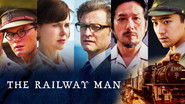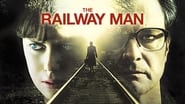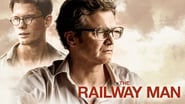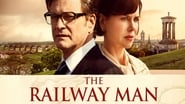tiailds
The premise sounded interesting. It didn't quite live up to it."Was it interesting?" While the story has been done, this instance was well written.2 out of 3."Was it memorable?" The locations were good. The performances were mostly believable. The big problem here is how small the movie feels. There are really only 4 characters, and a handful of settings.1.5 out of 3."Was it entertaining?" I found the pacing to be written in chapters and didn't flow together. Everything was too methodical. The symbolism seemed a tad pretentious.1 out of 3.Starting with 1 (because I was ordered to), 1 + 2 + 1.5 + 1 = 5.5 This movie is such a middle of the road 5, with everything right perfectly equaling everything wrong.
Paul Creeden
It is important to remember this film is based on true events between real people. Seeing this simply as a war film would miss the point. The film is exploring the stubborn disabling effects of war and violence on the mind. In a current Western world where PTSD is common in veterans of Iraq and Afghanistan, we here about the veterans who kill or commit suicide. We hear the cry for more help by veteran organizations and government. This film gets down to the core issues which develop between individuals under the duress of bullying by patriotic leaders. Some comments here have decried the emphasis on torture. However, that torture on all levels is the subject of the film. The film isn't about the miraculous healing of a broken man by a woman. The sustaining support, albeit coolly English, of the tortured soldier by Kidman's character is a catalyst, not a cure.The scenes between Firth and Sanada are extremely well done. They reveal a process of grief and healing between two damaged people. Feeling pain and violence leading to forgiveness and friendship. The basis of all reconciliation and healing. I wonder if younger generations can appreciate the hard work this takes. I also wonder if they can appreciate the deep devastation of war and lethal violence on the human mind. They have been bathed in a media of violence.
vincentlynch-moonoi
I usually don't "review" films which have already been reviewed more than 100 times, but I will this time because I was where part of this movie was filmed. The part of the film where they are building the railroad in the jungle was filmed in the area known as Hellfire Pass, northwest of the Bridge On The River Kwai, and adjacent to the River Kwai (which is actually pronounced like quack without the k). Unlike the film :The Bridge On The River Kwai", which was actually filmed in Ceylon and looked almost nothing like the actual bridge and river, this film is very accurately depicted. I could almost relive my hiking in that area quite a few years ago. This gives a far more realistic representation of how the western POWs were treated by the Japanese (at least based on the readings I have done).I give this film a lot of credit for the way in which they tell the story. It begins with a rather disheveled man on a British train who meets a beautiful British woman and they eventually get married. Then she learns why at times he is so distant or goes into his psychological MELTDOWNS -- what happened building the Death Railway from Bangkok to Burma.Fortunately, they don't attempt to make Colin Firth and the other actors look young and old, depending on what part of the story is being told. Colin Firth plays the mature main character (and brilliantly), and Jeremy Irvine plays the young main character (equally as brilliantly). Nicole Kidman plays the bewildered wife, and is excellent. Stellan Skarsgård, suddenly looking considerably older, plays a war time colleague who helps tell the story. Hiroyuki Sanada plays the old Japanese man who once tortured Firth, while Tanroh Ishida plays the war time torturer.I can only find one thing to criticize here and that is failing to show the true suffering that took place by the Western POWs as they were digging out of the rock Hellfire Pass. Many simply dropped over dead...little more than skeletons when they died. In other words, they didn't show half the horror that existed there (and if you doubt me, Google photographs of "death railway" and "hellfire pass").On the other hand, the all important scene between the old Firth and the old Japanese torturer is quite remarkable. Maybe it shows that some Japanese might have shown some remorse over what they did.For those who like historical films, this is a stunning piece of work. My father fought in the European theater, including with the troops who first went into Germany and found all the atrocities. He would never speak of that, and I only learned a bit about what he experienced after he died and I was going through his personal belongings. And this fact -- the not willing to talk about it -- is actually covered in the film. Few films give us any idea of how some some suffered in World War II. This film does.P.S. -- at the end of the film you get to see the real Bridge On The River Kwai and the real Hellfire Pass.










